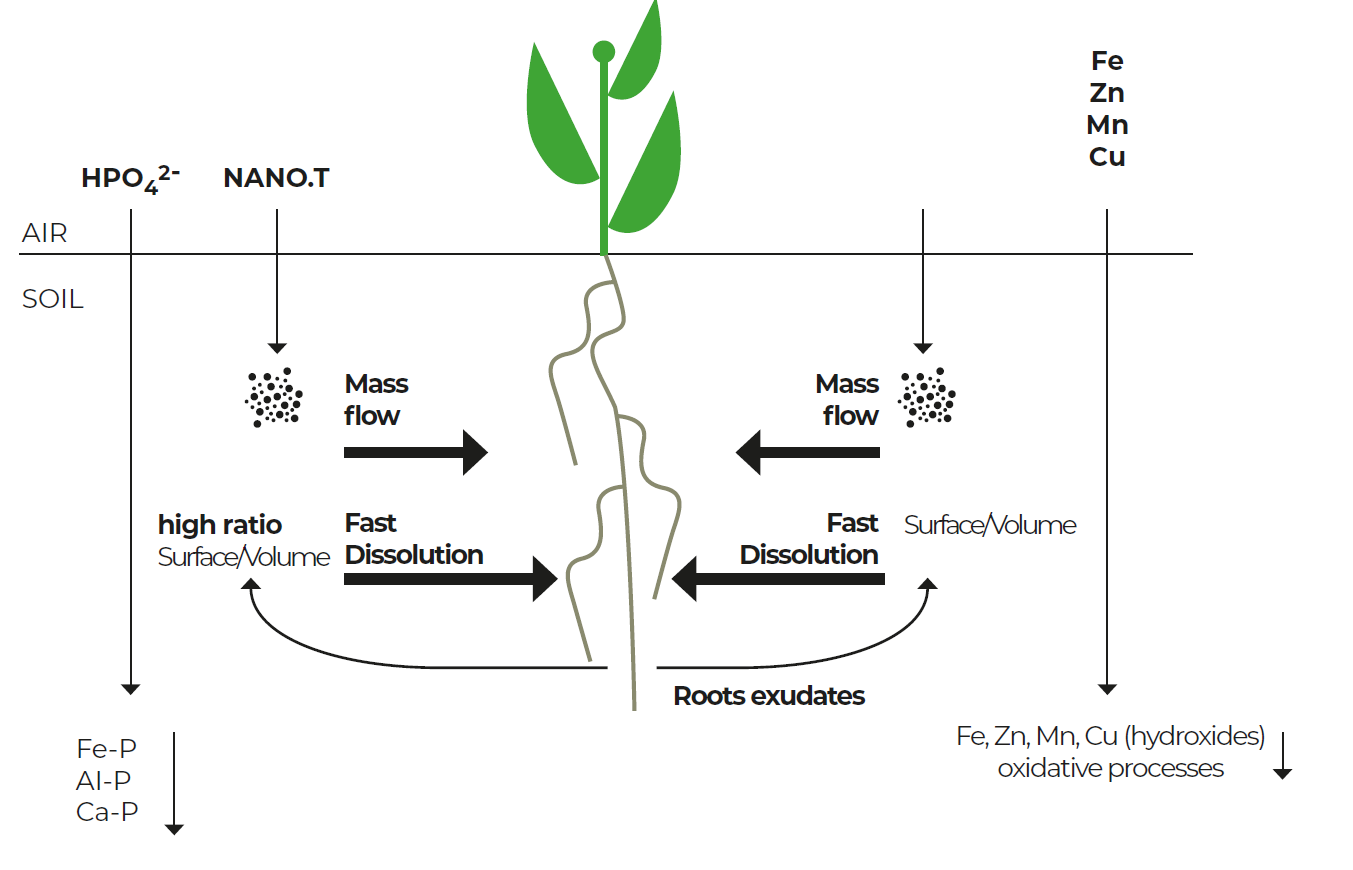Nano.T® technology
How it works on the roots
Nutrients with an internal concentration smaller than 100 mg/kg are called
microelements: Iron (Fe), Zinc (Zn), Copper (Cu), Manganese (Mn), Boron (B), Molybdenum (Mo). Four of them (Fe, Zn, Mn, and Cu) oxydise easily into the soil or, reacting with other elements, create insoluble compounds. This causes poor nutritional efficiency (waste of resources, lower production and environmental impact). NANO.T® fertilizers are innovative products that overcome all of these problems. The scheme on the next page shows the operating strategy of NANO.T® fertilizers.

NANO.T due to its solid nature and its very small dimension (less than 100 nm), when is applied on soil does not precipitate (which happens with soluble phosphate and sources of Fe, Zn, Mn, Cu) and reaches roots easily passing through soil pore (they are transported by the mass flow).
Once reached the rhizosphere (area very close to plant root) the high ratio surface/volume of NANO.T helps the solubility – made by root exudates – and the nutrients uptake.
The iron example
Chelating and complexing agents vs Nano.T®

Traditional fertilizers
- Limited persistence since they can be deactivated by the pH in the soil
- Reduced effectiveness if exposed to ultraviolet light, heat, oxidizing agents
- They can be dispersed in the environment because they are subject to leaching and to polluting groundwater

Nano.T®Fe
- High persistence, effective and stable in a wide range of pH (1-10)
- Active in any condition of light and temperature
- Low environmental impact because retained by the soil and not subject to leaching


